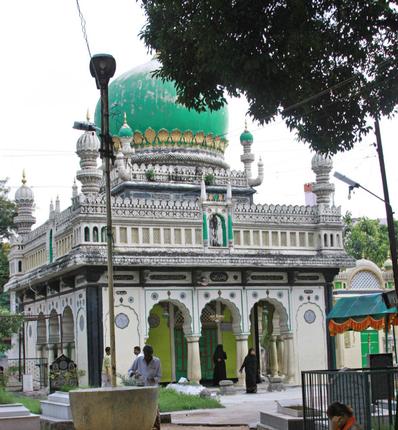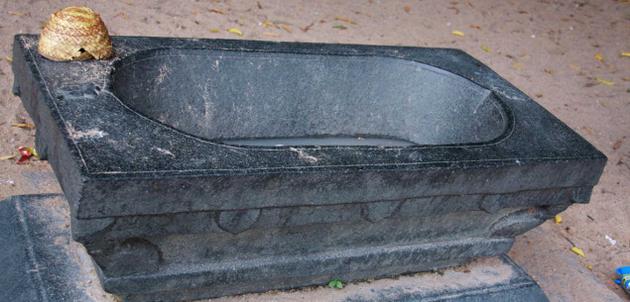Heritage The luxuriously embellished, richly coloured dargah is a feast for the senses. Serish nanisetti
Hyderabad, TELANGANA :
The real discovery of Hyderabad heritage begins only when you discard your vehicle and trade it for a cycle or a pair of sneakers. Walking on the road between the Charminar and Purana Pul you might discover the Syed Hazrath Musa Qadri’s Dargah. It is a blink and miss structure on the left side between Koka ki Tatti and Purana Pul on the Hussainialam Road.
A huge green door leads you inside and on the left is the kanqah. In a portion of the kankah lives the family of the 28th descendent of Musa Qadri, who was a descendent of Abdul Lateef Laubali, whose dargah draws a number of pilgrims to Kurnool. Laubali was among the seven migrating Shia saints who came from Baghdad.

Set amidst age-old tamarind trees, is the double-storey green domed dargah of Musa Qadri. According to the inscription, the construction of the dargah was completed in 15 years. “After Syed Hazrath Musa Qadri passed away in 1800 at the age of 63, his son Ghulam Ali Qadri had a dream and saw the shape of the dargah and he set about building it which he finished within 15 years. It was not very difficult as Musa Qadri had 45,000 followers including people like Ghansi Mian after whom the bazaar is named,” says Syed Shah Fazlullah Qadri, the 28th descendent.
Unlike the bulbous domes of Qutb Shahi nobles, this is a flatter much more graceful structure on a rectangular base but with luxurious decoration on the outside as well as inside. Geometrical patterns, vegetal and floral patterns and skilled Persian calligraphy dominate every nook and cranny of the structure. No space is left uncovered. The deep patterns in stucco, which have been created even in the undulating parts of the minarets, mark them out from the earlier tradition of simple geometric shapes.
The upper storey is reached by climbing an arcane claustrophobic staircase where 10 square stones are jammed in a small space. “Nobody comes here. Very few people can climb this,” says Fazlullah’s son as he shows the chronogrammatic calligraphy about Musa Qadri and the intricately wrought spandrels and minarets.
The calligraphy in stone narrates the names of God or tells us a bit about the structure and its creators.
Unlike others, Ghulam Ali Qadri had a sense of history and he wrote the Mashkwatun Nubuwat, a seven-volume history chronicling the miracles of Musa Qadri as well as tracing the lineage back to Huma (Syria) and Baghdad (Iraq). According to the book, it was Syed Shah Piranshah Mohiuddin Thani Qadri who came to pray at the Quli Qutb Shah mosque which was in an open ground and he settled down there.

Outside the Dargah is a black boat shaped structure carved out of hard granite called qashti hazatmand(ship of wish-fulfilment). “People come here to pray and when their desires are fulfilled the fill this with sherbet and all the people come and finish it off,” says Fazalullah Qadri.
source: http://www.thehindu.com / The Hindu / Home> Friday Review / by Serish Nanisetti / November 19th, 2010








